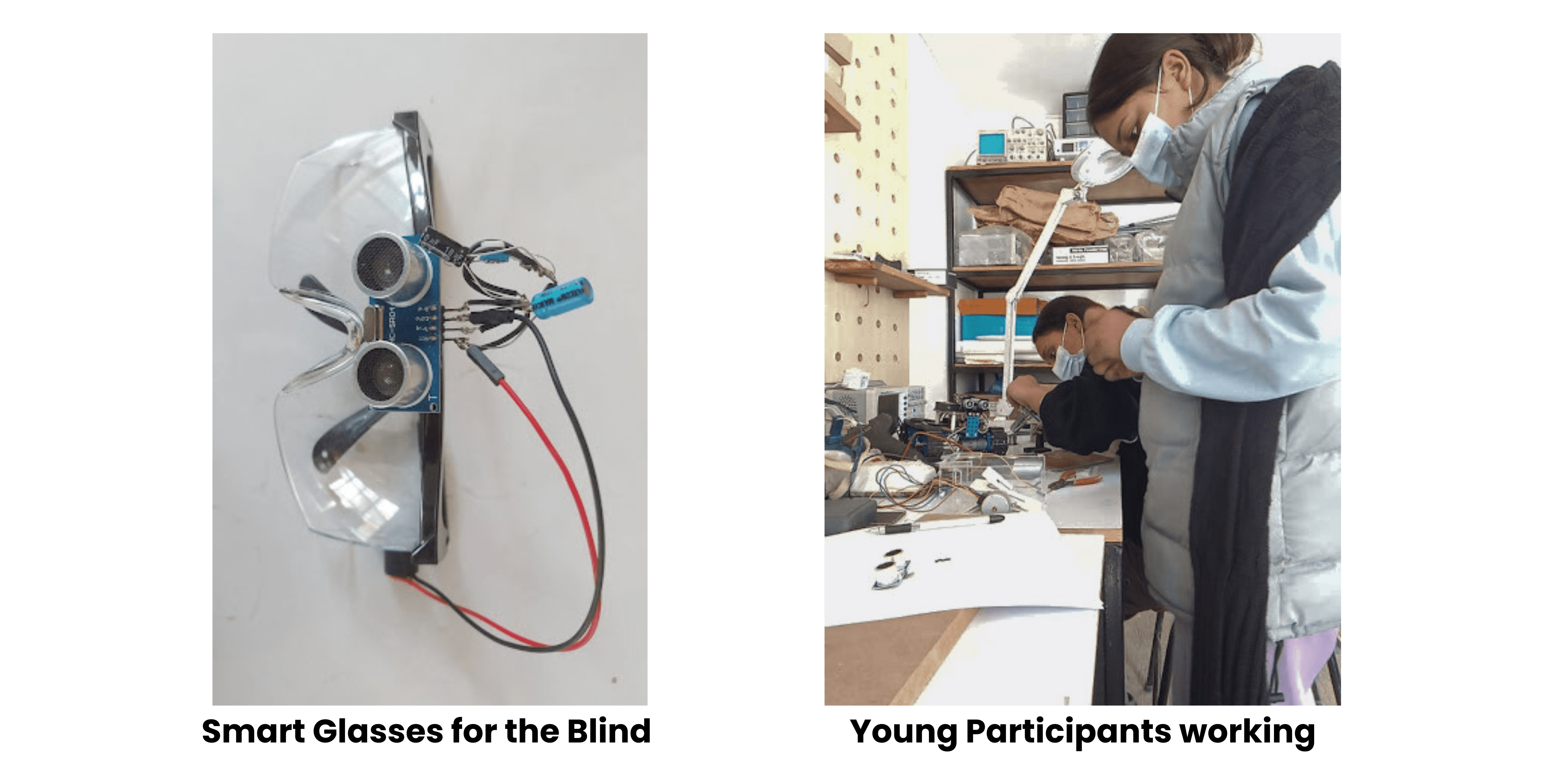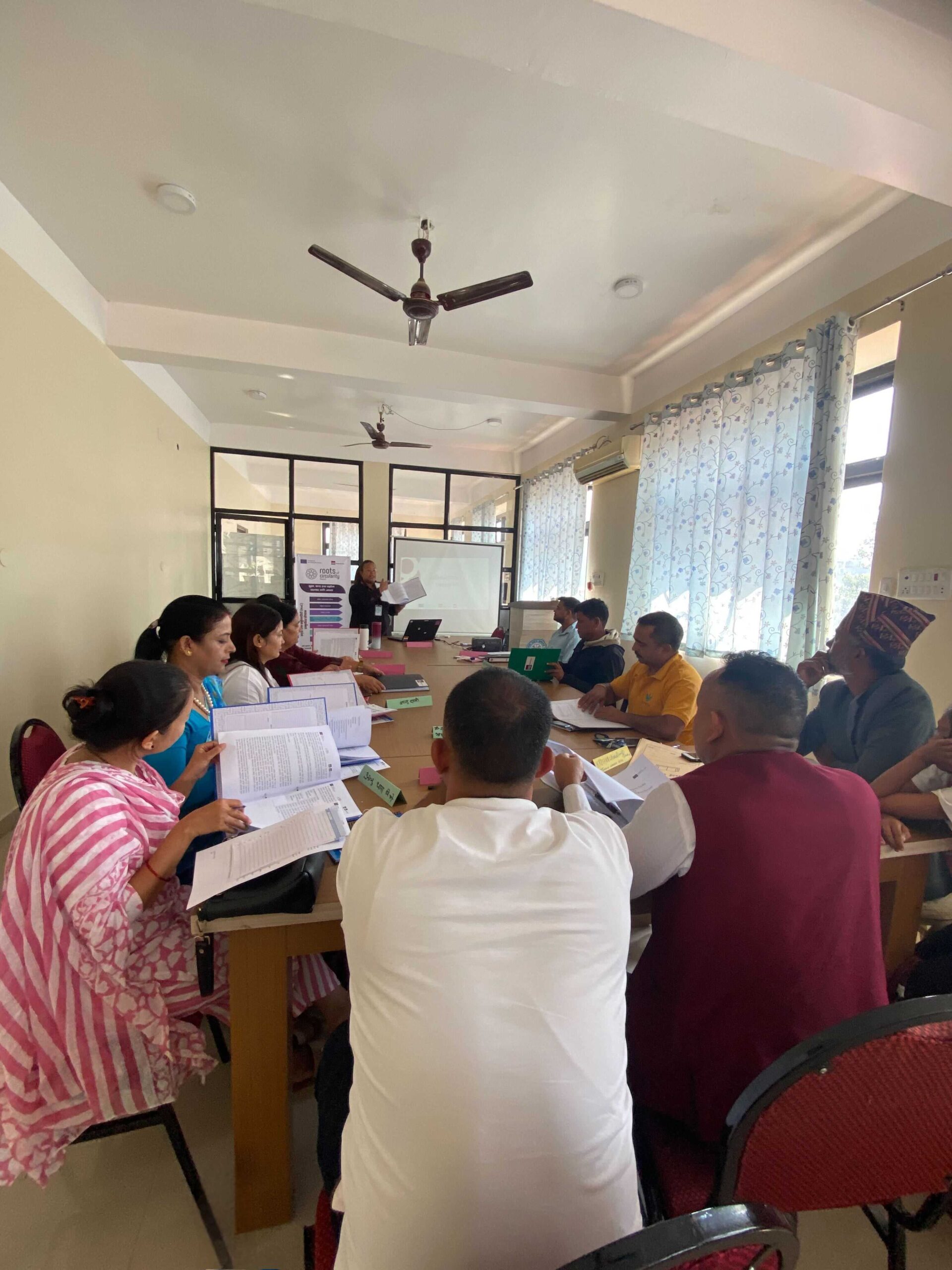By Melina Tuladhar and Denjing Tamang
Impact Hub Kathmandu (Fablab Nepal) is one of the six collaborating partners in the world for ‘The Making Spaces Research Project’ of the University College London, led by Professor Louise Archer under the financial support of the Lloyd’s Register Foundation. Working with maker spaces in five countries, the project identifies and shares equitable practices to support diverse young people’s engagement with STEM.
The Making Good Prize aims to showcase and celebrate young people’s innovative, STEM-rich ideas and designs that challenge social injustice and promote safe, sustainable communities. For 2023-24, applications for the Making Good prize are welcomed from young people who attend one of the six partner maker spaces: ADA, Kersnikova, Spark, FabLab Nepal, Knowle West Media Centre, MadLaand b. All entries will be displayed in a digital exhibition.
Prize categories
Safe: Submissions that help make communities and the world a safer place. This might include protecting people and/or the natural world from harm.
Sustainable: Submissions that support and promote environmentally sustainable living, protecting the planet and life on Earth.
Social justice: Submissions that support equity, inclusion and social justice and promote respect and well-being among individuals and communities. Each category will include a prize for junior (age 10-15) and senior (age 16+) entrants.
By providing a platform for youth-led making that focuses on promoting social good, the Making Good prize seeks to highlight the value of inclusive STEM participation and the powerful, inspiring role that young people can play in creating safe, sustainable and socially just communities.
Our young people who attended the twelve sessions on digital manufacturing and the basics of electronics engineering have submitted three projects to The Making Good Prize. The projects are listed and described below:
Smart Dustbin
The smart dustbin is designed to improve convenience and hygiene in waste disposal. The goal of the project is to develop a dustbin that opens its lid without human intervention when it senses someone approaching.
Youth participants had been disturbed by Kathmandu’s trash management issues for a long time. Every day, the stench of garbage, sidewalks littered with waste, and overflowing trash cans serves as a reminder for a solution that was desperately needed. It was about communal well-being and environmental sustainability, not just cleaning. The thought sprang through their mind one day while strolling through the busy streets: why not use technology to address this problem head-on? Using our enthusiasm for invention and our technical experience, they imagined an Arduino-powered smart trash can. This machine would transform garbage management—it would do more than just gather rubbish. The motivation behind this idea is to improve the efficiency and hygiene of waste disposal by reducing the need for physical contact with the dustbin’s lid.
The concept evolved as they collaborated with us, the Fablab team in Impact Hub Kathmandu. Together, we brainstormed ideas, prototyped designs, and refined the functionality of the smart dustbin. It is a practical application of automation and sensor technology to make daily tasks more convenient and hygienic, particularly in public spaces or homes.

Smart Glasses for Blind
Smart Glasses for the Blind are intended to empower blind people by improving their ability to navigate and encouraging independence. The project’s ultimate goal is to significantly improve the lives of blind people and make the world more accessible and inclusive for everybody utilizing Ultrasonic Sensors.
The ultrasonic sensors detect obstacles in the user’s path and provide real-time feedback, allowing for safer and more efficient navigation of their surroundings. The idea for the Smart Glasses for the Blind with Ultrasonic Sensor technology was born from observing a common issue on the streets: the lack of respect and understanding that blind individuals face from pedestrians. They noticed the basic challenges they encounter, such as navigating sidewalks and crosswalks relying on traditional aids like canes. In Nepal, the infrastructures are not disable-friendly. Basic requirements such as Tactile Paving for the blind, sound indicator and traffic light etc. are very limited even in the capital, Kathmandu.
Seeing this firsthand really struck a chord with the Youth participants. It made them realize the urgent need for a solution that not only helps visually impaired individuals navigate safely but also promotes awareness and respect among pedestrians.
That’s when they got inspired to create something that could make a real difference. By combining innovative technology with a deep understanding of the daily struggles faced by blind individuals, they’re not just building a product; they’re striving to foster a more inclusive and empathetic society. These smart glasses are just the beginning of our mission to create positive change and ensure that everyone, regardless of ability, can move through the world with dignity and autonomy.

Fire Fighting truck
A Fire Fighting Truck is designed and built to cease the fire. This truck can detect the fire by itself and control the fire by ejecting water at the precise location. The truck uses flame sensors that can detect fire and it can move to extinguish fire. The fire fighting truck has the same structure as a remote controlled car. The key feature of the Fire Fighting Truck lies in its ability to autonomously detect and suppress fires, making it a valuable asset in firefighting operations across different settings.
Gas cylinder explosions are unfortunately common and can have devastating consequences. In Kathmandu, like in many urban areas, these accidents pose a significant risk to public safety and property. One recent accident in Tokha caused a loss of three lives and damages worth 10 million Nepali Rupees in Tokha.
So the youth participants thought of an idea to use an autonomous vehicle to detect fire and to take action to extinguish it without human intervention. They thought this could be a good way to manage risk and prevent any disaster from escalating.
They also believe that the Fire-fighting truck may also be a part of a broader emergency response infrastructure that provides critical assistance during disasters. By supporting these efforts, they contribute to overall societal well being by ensuring that communities are prepared and equipped to respond effectively to emergencies.











